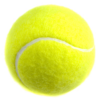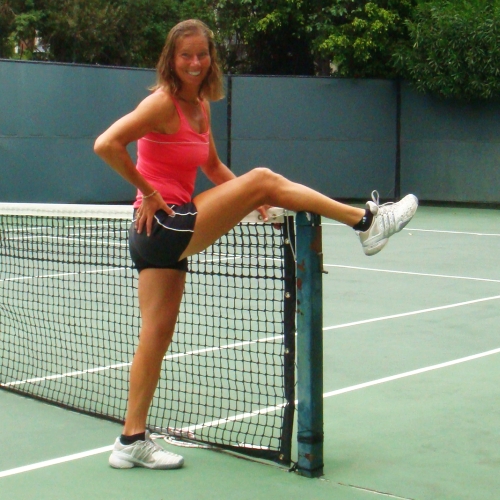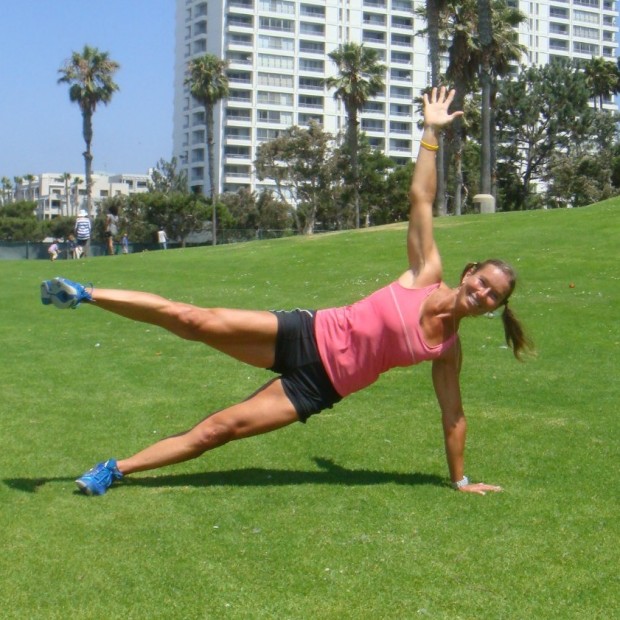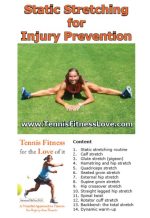Calf pain is more debilitating experience than one can imagine. It’s a feeling that no athlete wants to experience. Especially tennis players, who need to be light on their feet and make thousands of small adjustment steps.
You can strain your calf when you push off or lunge after a ball. It often happens when you haven’t warmed up properly or your calf muscles are tight and/or de-conditioned. If you had previous calf injuries, your calf muscles are more vulnerable for future injuries as well. (click to tweet)
Quite small, calf muscles are deceivingly powerful:
- they help the body to sustain its upright posture
- they propel the body forward in running or walking
- they assist in lifting the body to stand up
- they are strong and thick even on slender individuals
There are five calf muscles: gastrocnemius, soleus, tibialis posterior, flexor digitorum langus and flexor hallucis longus. The last three are deep inside under the soleus, which is under the gastrocnemius. The gastrocnemius is the outer muscle that gives the calf its bellied shape and it attaches through the Achilles tendon to the heel bone. The gastrocnemius is extremely strong and has the power to lift the entire body weight in jumping, climbing, or descending the stairs or hills.
The calf muscles are constantly working against gravity, preventing you from tilting over. If the calves become dysfunctional, then other body parts, such as knees, inner thighs and lower back, have to compensate to keep the body upright. The more the other muscles work, the weaker the calves get become more dysfunctional. Subsequently, every movement that you do on the tennis court, in the gym, or outdoors, the other (compensating) muscle groups work even harder.
Dysfunctional calves can cause shin splints or pain in the bottom of the foot that we often blame on bad shoes or flat feet. The majority of feet problems are caused from weakened calves and the intrinsic feet muscles. (side note: discover these great feet strengthening exercises that you can do while watching TV, or anytime)
Cramps in the calves are caused by the hard work that they are not accustomed to, or by improper nutrition, dehydration, vitamin deficiency, drug side effects, or poor circulation. Gently massage the cramped calf and flex the foot toward the knee. Cramps in your calves are telling you a message. Listen to your body and learn. And strengthen and lengthen your calves crying for help.
Prevent Calf Pain with Stretching
Get the habit of stretching your calves after each tennis practice. While you are still thinking about your game, go to the net post, flex your foot, and put your heel as close to the post as possible. When your foot is fixed in this position, start moving your hips slowly forward toward the post until you feel a good stretch in the calf. Hold the stretch for one minute, and then switch sides. You can perform the stretch by the fence, wall, or a door opening.
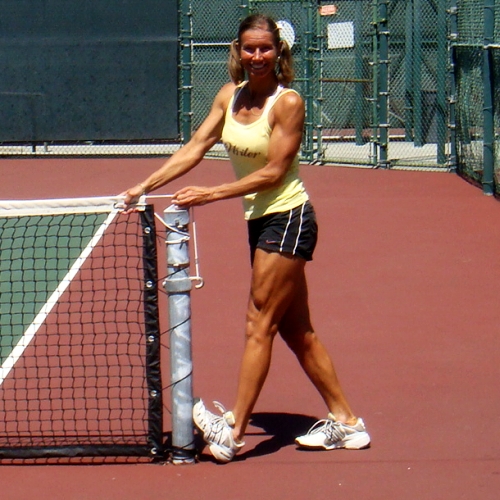
Sometimes stretching your calves is not good enough. When they become extremely inflexible and weak, they get easily overworked and overstretched. Tight calves develop trigger points and then even stretching will not help. You may experience other painful symptoms, such as shin splints, plantar fasciitis or sore Achilles tendons.
Prevent Calf Pain with Myofascial Release
To get rid of the trigger points you need to do calf myofascial release. You can either visit a deep tissue massage therapist, or perform self-myofascial release. The latter option is highly advisable because it is super easy (even though it can be quite painful) and because you should do the calf myofascial release daily. Definitely after your tennis practice and preferably in the evening before you go to bed, and first thing in the morning upon awakening, before you start walking around. The more issues you have with your calves and feet, the more diligent you have to be.
You can do it either standing, using the net pole, or seated, using your knee.
Stand close to the net pole and put your calf on a top of it. Most of the net poles have a round top that is greatly suited for “digging” in your calves. If your net pole is sharp, find something more round. It could be the edge of the bench, or table, or a low fence. Be creative, look around and find something firm and “pokeable”. You can (actually, you SHOULD) carry a firm roller with you in the tennis bag. My favorite one, that is easy to transport and firm enough to work even your calves, is The Grid roller.
Start sliding your calf over the top of the pole from the ankle to the knee. Use the same technique if you use the roller or anything else. If you find an extremely sore trigger point, stay on it longer and work it away with short concentrated movements. After a while, turn your foot inward or outward to reach different areas and find different painful spots in your calf.
This work can be extremely uncomfortable and painful, but when your calves get soft and smooth without knots, you will feel great. If it is difficult to put your calf on the top of the pole, your hamstrings are too tight and they need stretching and myofascial release as well. Meanwhile, you can use this seated version that can be also done when you sit on the bench and resting, or at home in the chair or sofa.
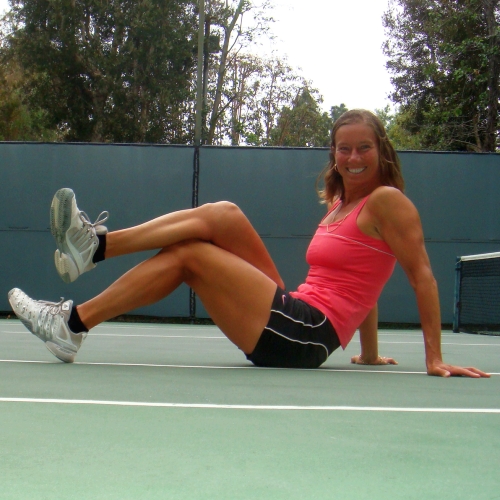
Listen to your calves and keep them healthy. Your movement on the court will be faster, your shots will get more powerful, and your tennis game will improve.
.
